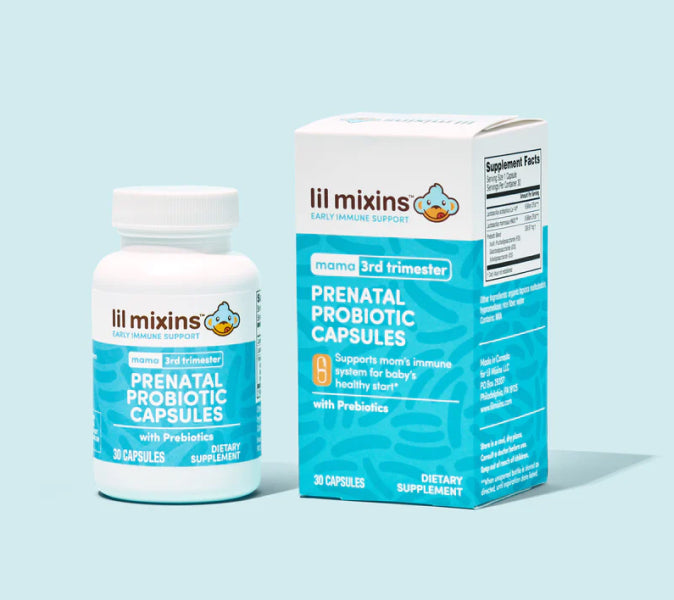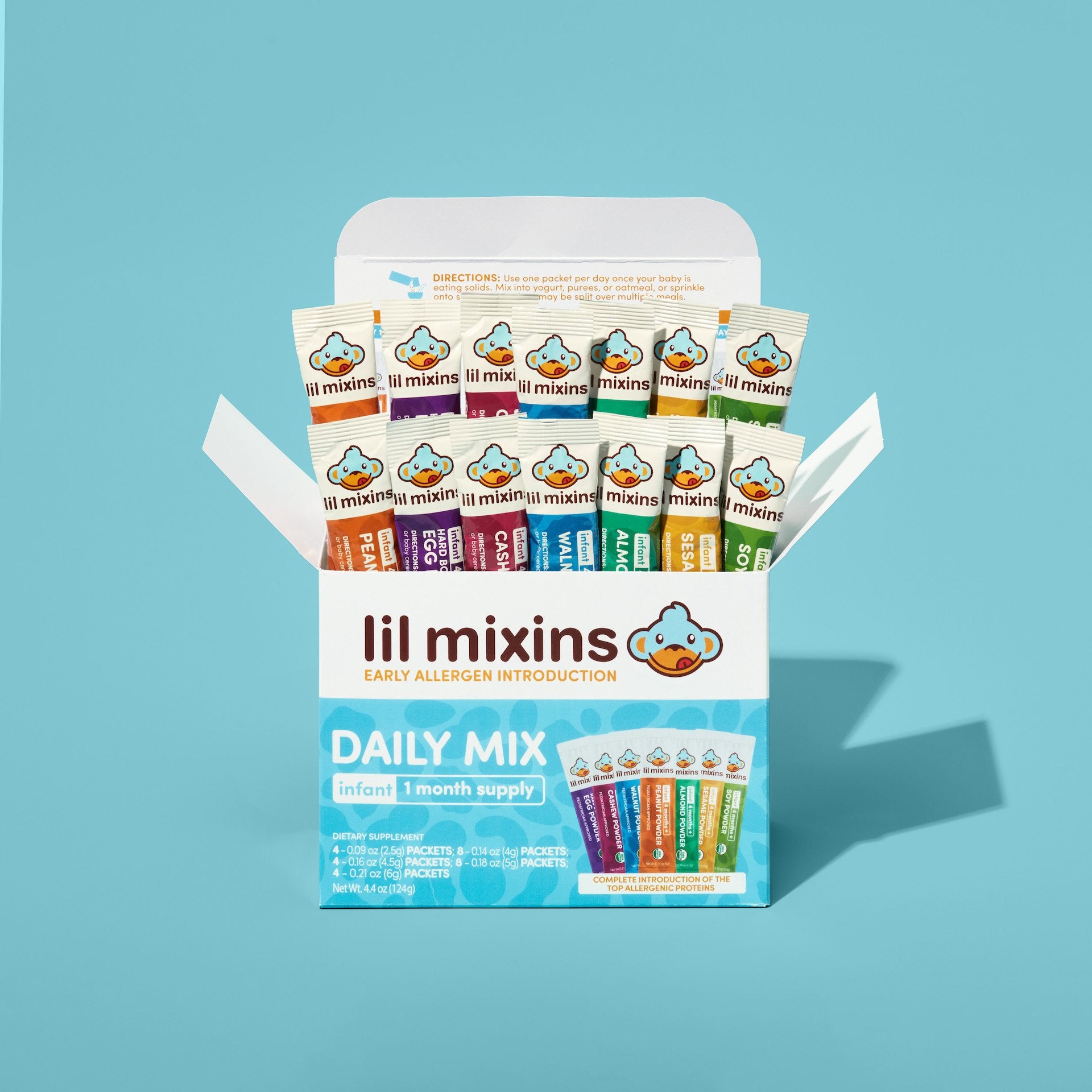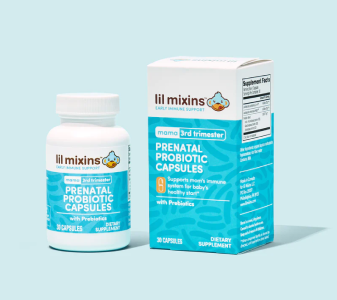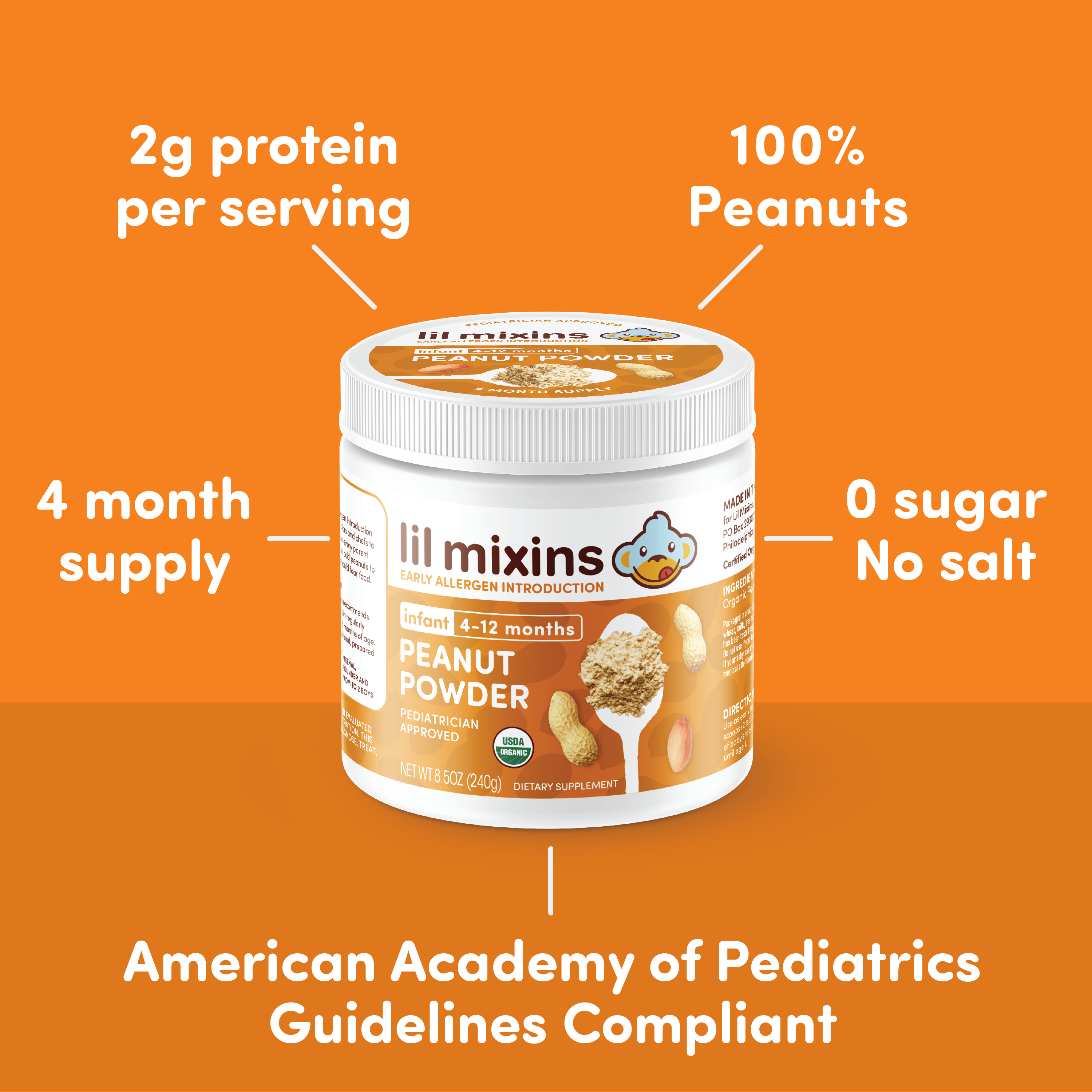The Types of Eczema in Babies
Eczema can be a frustrating and useless diagnosis, because it doesn’t tell you why your baby is hurting or how to help them. Understanding the causes of your babies eczema and what kind of eczema they have will help you treat it.
Eczema is the diagnosis for any skin that regularly gets itchy and becomes red or inflamed. There are different types of eczema in babies depending on what’s going on beneath the surface:
- Atopic dermatitis
- Seborrheic dermatitis, otherwise known as cradle cap
- Contact dermatitis

Shop Prenatal Probiotic Capsules One-Month Supply
Atopic Dermatitis, or Allergic Eczema
Almost always, when people think of baby eczema, they are talking about atopic dermatitis (AD).

Atopic dermatitis on a baby.
It’s called “atopic” because atopic means “a form of allergy,” and dermatitis because the allergy is affecting the skin.
Most AD shows up before your baby hits 6 months old. In babies under 6 months, who are only drinking breast milk/formula, the skin is the most active part of their immune system. Atopic dermatitis may affect 1 in 5 babies at some point.
Atopic dermatitis may be triggered by an underlying allergy to dust, pollen, or food, and it may be more likely to flare when your baby comes into contact with these. An allergist can help figure out triggers of AD.
A family history of any allergic disease —- food allergy, eczema or asthma —- can increase a baby’s chance of also having AD.
Depending on what allergy is causing flares of AD, the symptoms may come and go. Sometimes your baby’s skin will seem totally normal, and other times it will flare.
As children grow up, their immune system’s develop, and they learn to control triggers, so their atopic dermatitis goes away, lessens in itchiness, or shows up less frequently.
Babies with AD, the allergic form of eczema, are more likely to develop asthma and hay fever (allergic rhinitis) because of that underlying allergy. Regular moisturizing with an emollient may prevent flares. Daily use of antihistamines can also keep flares from happening. Treatment of flares relies on removing the allergic triggers, and using emollients and steroids to heal damaged skin.

Shop Daily Mix One-Month Supply
Is Cradle Cap Eczema?
Seborrheic dermatitis, or cradle cap, is actually not eczema, though it can look like it. Cradle cap is excessive output of sebum from the sebaceous, or oil glands. Too much sebum or a change in sebum creates an oily coating, crusts, or scales on the scalp or face. Cradle cap can show up between 2 weeks and 12 months old.
Cradle cap is not usually itchy, which is a key difference between atopic dermatitis of the scalp and cradle cap. 
Cradle cap forms on the top of the scalp and is not usually itchy.
Some of the microbes on skin are yeasts. Too much yeast can cause yeast infections, athlete's foot, and dandruff in adults. In babies, yeast overgrowth is responsible for cradle cap.
Instead of avoiding baths and adding moisturizer to cradle cap, the best treatment is washing your baby's hair once a day with a mild dandruff shampoo. You can also use petroleum jelly to loosen any scales, and then use a soft brush to gently remove excess skin.
Contact Dermatitis
Contact dermatitis is a form of eczema where red, itchy skin is triggered by contact with a chemical, substance, or material.
Common triggers of contact dermatitis are nickel (in rings), soaps, fragrances, different cloths, and even sweat. Contact dermatitis is most often found on the hands, but can also be spread over the body if the trigger is something in clothing, a fragrance in a laundry soap, etc.
The management of contact dermatitis is as simple as not touching the trigger.
While contact dermatitis is more common in adults, because they are exposed to more chemicals, it can happen in children.
Preventing flares by sticking to cotton and clean products, combined with regular moisturizing of hands and areas that are affected is the most effective way to reduce the impact of symptoms.





